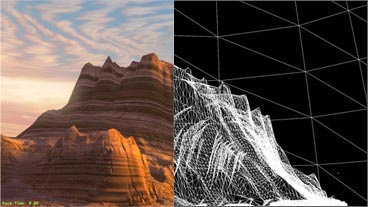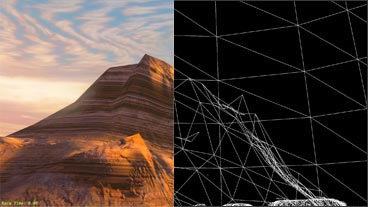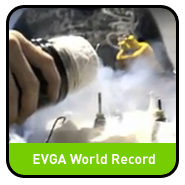NVIDIA does DX 11 right!
Next-generation gaming has arrived. NVIDIA® GeForce® GTX 400 series gives your games an adrenaline shot with the world’s fastest performance and futuristic, visually-stunning graphics. Experience heart-pounding, cinematic visuals on your favorite games with the combined power of DirectX 11, CUDA™, and NVIDIA® PhysX® technologies. And expand your visual real estate across three HD displays in jaw-dropping stereoscopic 3D for the ultimate in immersive gaming. NVIDIA® GeForce® GTX 400 Series: pure adrenaline meets visual bliss.
BitSquid and Fatshark are excited to announce that the Stone Giant demo is available for immediate download.
Proof is in the video
DirectX 11 Tessellation
With the recent buzz around DirectX 11, you’ve probably heard a lot about one of its biggest new features: tessellation. As a concept, tessellation is fairly straight forward—you take a polygon and dice it into smaller pieces. But why is this a big deal? And how does it benefit games? In this article, we’ll take a look at why tessellation is bringing profound changes to 3D graphics on the PC, and how the NVIDIA® GeForce® GTX 400 series GPUs provide breakthrough tessellation performance.
In its most basic form, tessellation is a method of breaking down polygons into finer pieces. For example, if you take a square and cut it across its diagonal, you’ve "tessellated" this square into two triangles. By itself, tessellation does little to improve realism. For example, in a game, it doesn’t really matter if a square is rendered as two triangles or two thousand triangles—tessellation only improves realism if the new triangles are put to use in depicting new information.


The simplest and most popular way of putting the new triangles to use is a technique called displacement mapping. A displacement map is a texture that stores height information. When applied to a surface, it allows vertices on the surface to be shifted up or down based on the height information. For example, the graphics artist can take a slab of marble and shift the vertices to form a carving. Another popular technique is to apply displacement maps over terrain to carve out craters, canyons, and peaks.
Like tessellation, displacement mapping has been around for a long time, but until recently, it has never really caught on. The reason is that for displacement mapping to be effective, the surface must be made up of a large number of vertices. To take the example of the marble carving—if the marble block were made up of eight vertices, no amount of relative displacement between them can produce the relief of a dragon. A detailed relief can be formed only if there are sufficient vertices in the base mesh to depict the new shape. In essence—displacement mapping needs tessellation, and vice versa.

Because the DirectX 11 tessellation pipeline is programmable, it can be used to solve a large number of graphics problems.

Perfect Bump Mapping
At its most basic, displacement mapping can be used as a drop-in replacement for existing bump mapping techniques. Current techniques such as normal mapping create the illusion of bumpy surfaces through better pixel shading. All these techniques work only in particular cases, and are only partially convincing when they do work. Take the case of parallax occlusion mapping, a very advanced form of bump mapping. Though it produces the illusion of overlapping geometry, it only works on flat surfaces and only in the interior of the object (see image to the right). True displacement mapping has none of these problems and produces accurate results from all viewing angles.
How GeForce GTX 400 GPUs handle Tessellation
Traditional GPU designs use a single geometry engine to perform tessellation. This approach is analogous to early GPU designs which used a single pixel pipeline to perform pixel shading. Seeing how pixel pipelines grew from a single unit to many parallel units and how it gained dominance in 3D realism, NVIDIA designed their tessellation architecture to be parallel from the very beginning.
GeForce GTX 400 GPUs are built with up to fifteen tessellation units, each with dedicated hardware for vertex fetch, tessellation, and coordinate transformations. They operate with four parallel raster engines which transform newly tessellated triangles into a fine stream of pixels for shading. The result is a breakthrough in tessellation performance—over 1.6 billion triangles per second in sustained performance. Compared to the fastest competing product, the GeForce GTX 480 is up to 7.8x faster as measured by the independent website Bjorn3D.
After many years of trial and error, tessellation has finally come to fruition on the PC. Stunning games like Metro 2033 already show the potential of tessellation. In time, tessellation will become as crucial and indispensible as pixel shading. Realizing its importance, NVIDIA has jump started the process by building a parallel tessellation architecture from the get go. The result is the GeForce GTX 400 family of GPUs—a true breakthrough in geometric realism and tessellation performance.


© 2010 NVIDIA Corporation. NVIDIA, the NVIDIA logo, PhysX, CUDA, SLI, 3D Vision, 3D Vision Surround, and GeForce are trademarks and/or registered trademarks of NVIDIA Corporation in the United States and other countries. All other trademarks are the property of their respective owners. All rights reserved.
Article viewed: 79948 times since 5/13/2010

